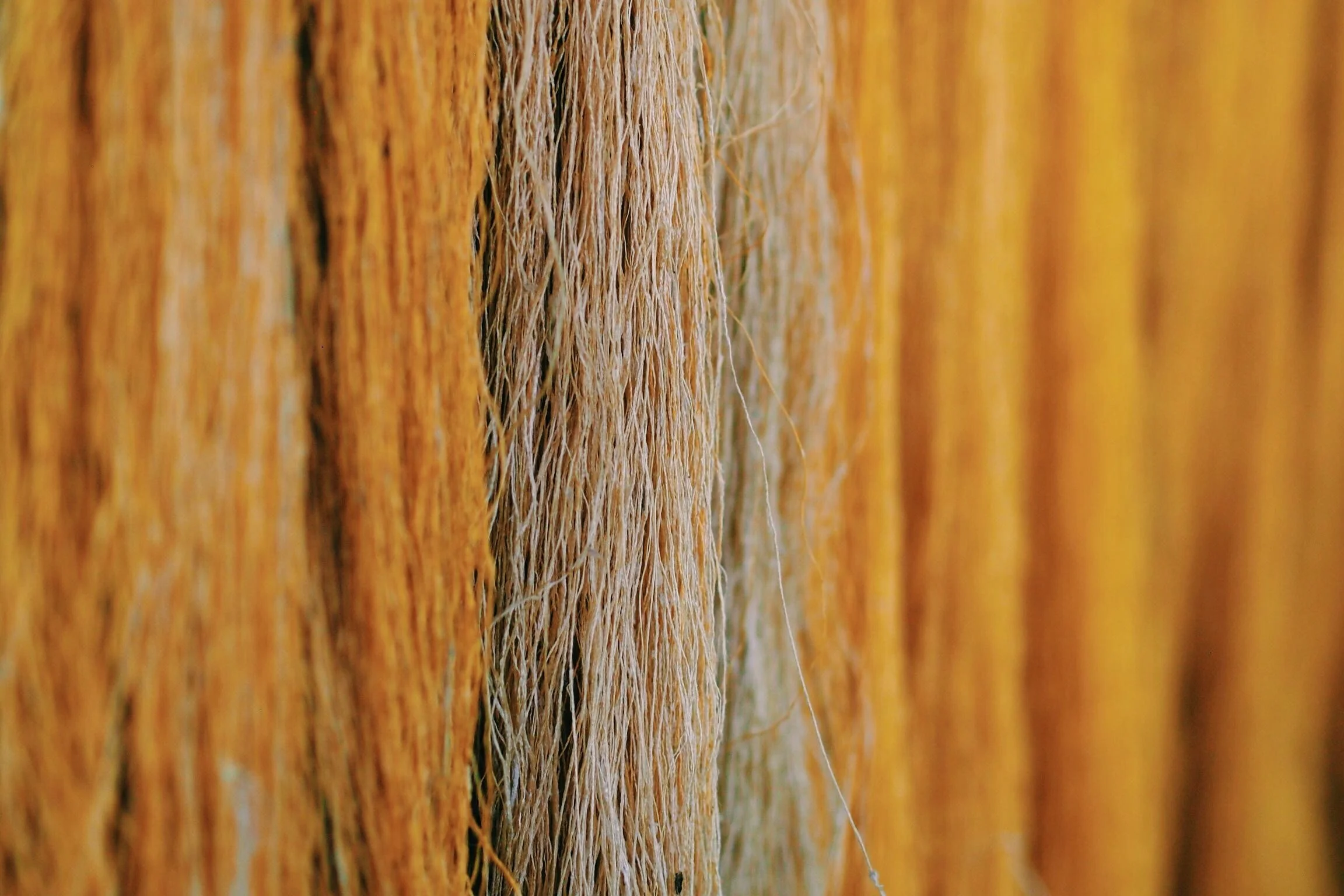Golden Silk, Cambodia
Thought to have been introduced from Northern India during Angkorian times, Assamese Muga ‘Golden’ Silk production was once a thriving industry in Cambodia. Golden threads were traditionally used for weaving luxurious sampot chang kben, a garment worn by the country’s elite. While Cambodia now imports up to 95% of its raw silk from Vietnam, a few organisations, including Artisans Angkor, have set out to revive local sericulture on a massive scale. Golden silkworms yield less raw silk than the white variety (300-400m versus 1400m per cocoon), but are easier to cultivate in Cambodia because they have adapted to the climate and pests. The worms are fed on a variety of mulberry that is native to the country.
Observing a 42-day lifecycle, the white worms change colour to gold when they are ready to start spinning their cocoon. At this stage they are transferred onto woven mats. The golden cocoons are collected after 10-12 days and their silk extracted in a two-step process. The raw silk, which covers the outer part of the cocoon, is removed first by boiling approximately 180 cocoons together in a pot. One end of filament is hooked onto a wheel and slowly spun from the pot. It requires constant attention to ensure the silk is pulled in one long, continuous thread.
Sixty cocoons at a time are then transferred to a second boiling pot to extract the finer inner silk. Each cocoon produces around 400m of silk filament in total. Once enough Golden Silk has been extracted, a team of artisans sort, wash and spin the thread onto bobbins. A large bobbin used to weave a roll of plain fabric contains 100m of silk fiber.
The smooth, fine silk is a more vibrant shade of gold than the course, gummy raw silk. One of the most interesting dyeing techniques used to treat Golden silk is hôl, or Cambodian ikat. Much like Malaysian or Indonesian ikat, groups of threads are bound and tied before being dip-dyed. Repeated dyeing creates complex patterns on the threads. In a very specific sequence, the silk is transferred onto chopsticks that the weaver feeds into the loom to create Hôl Lboeuk, a contemporary ceremonial cloth. Read more on Wander-Lush.






